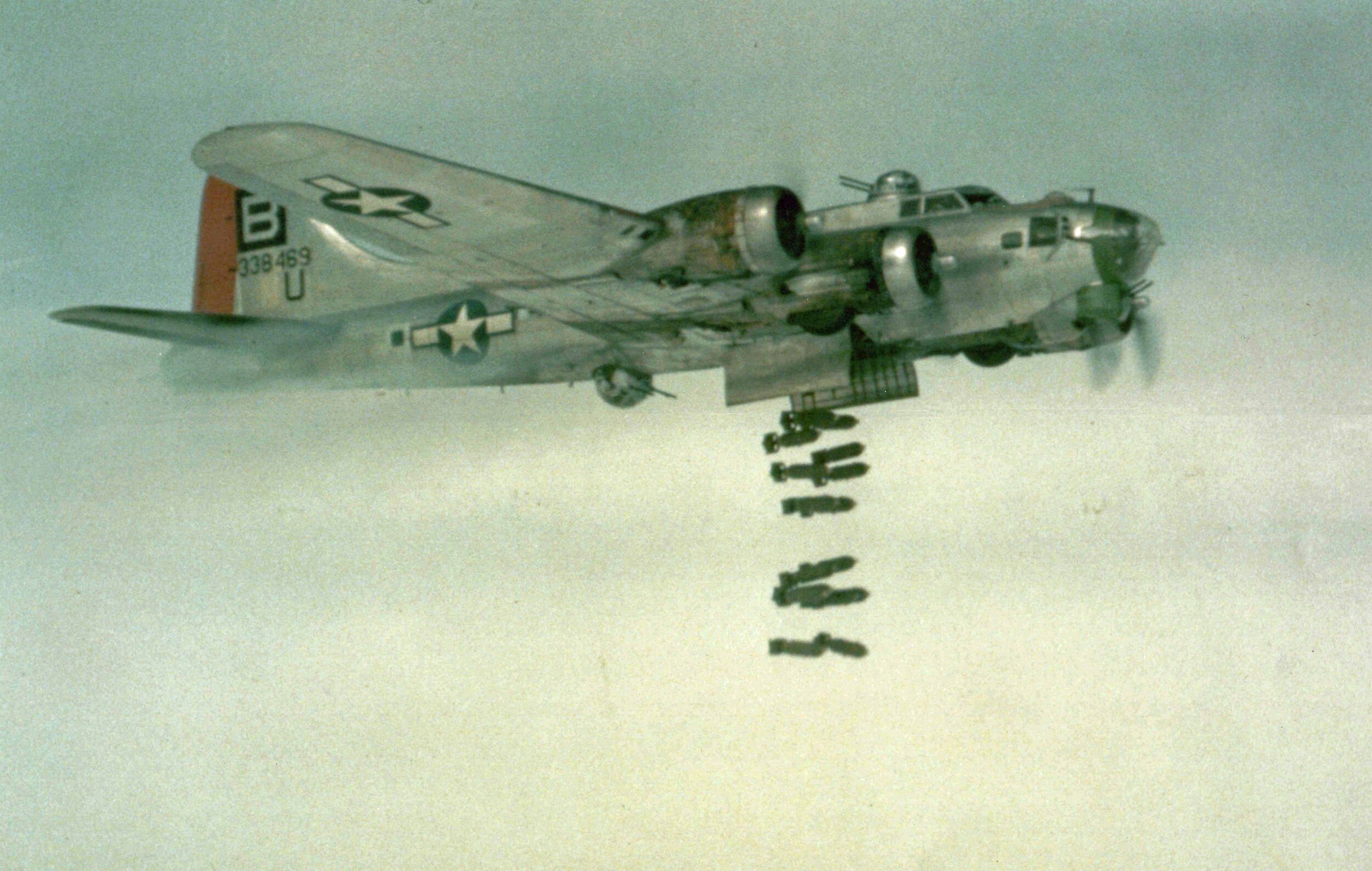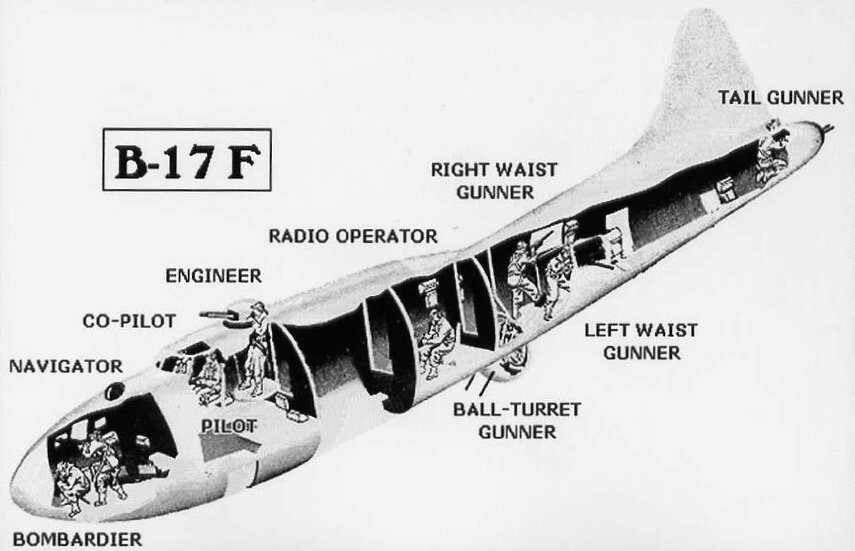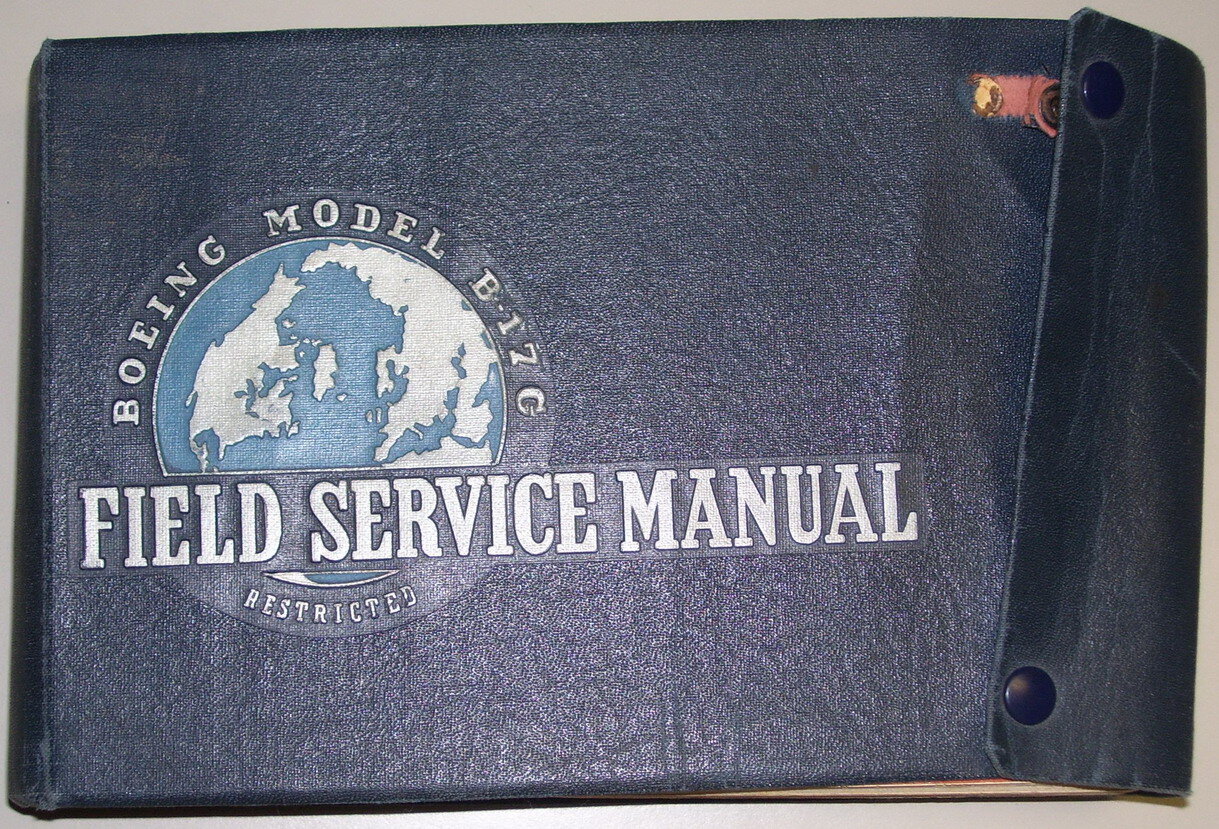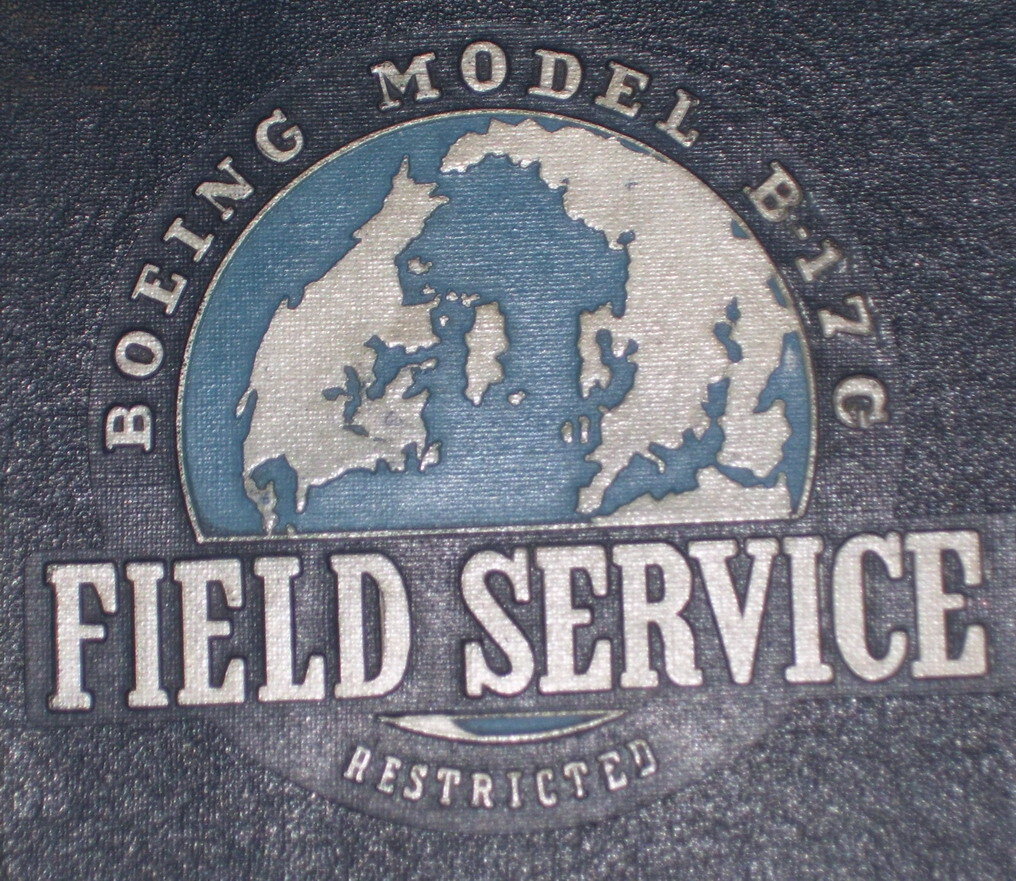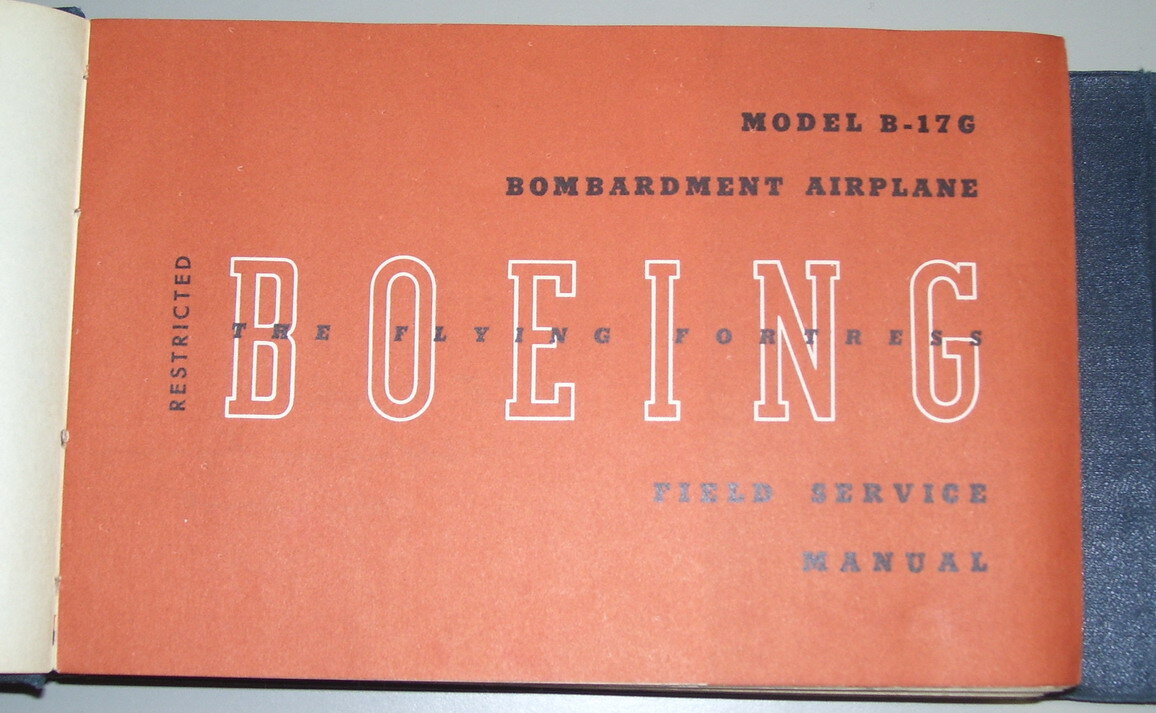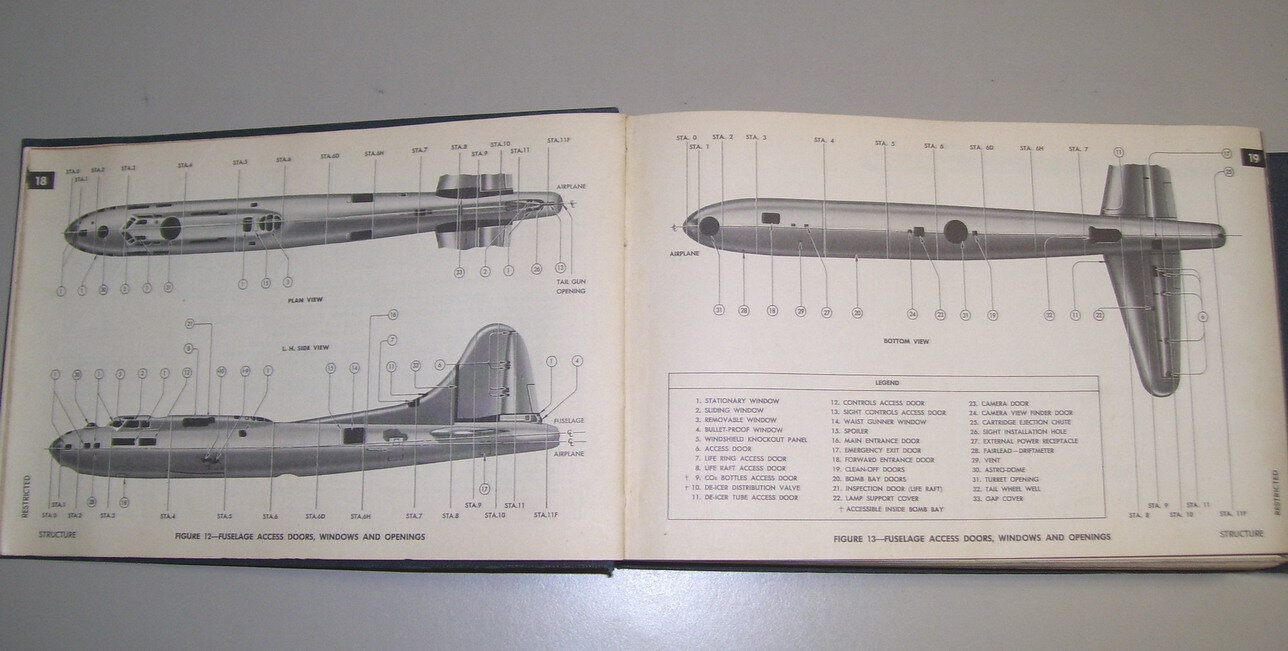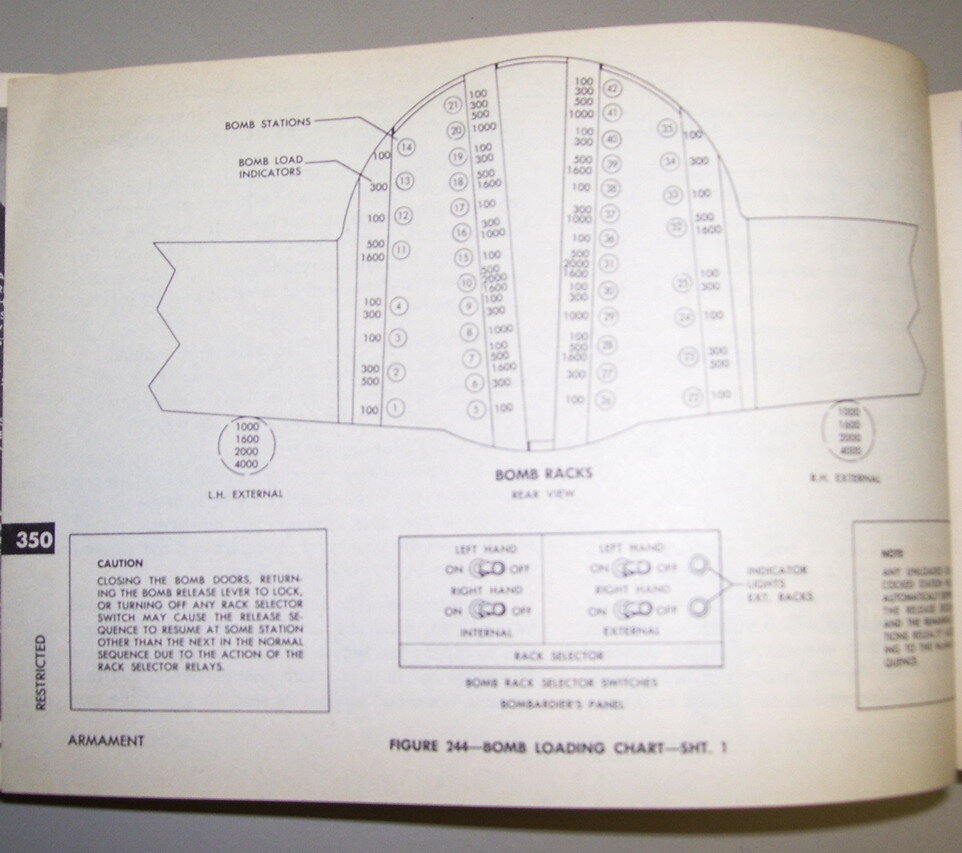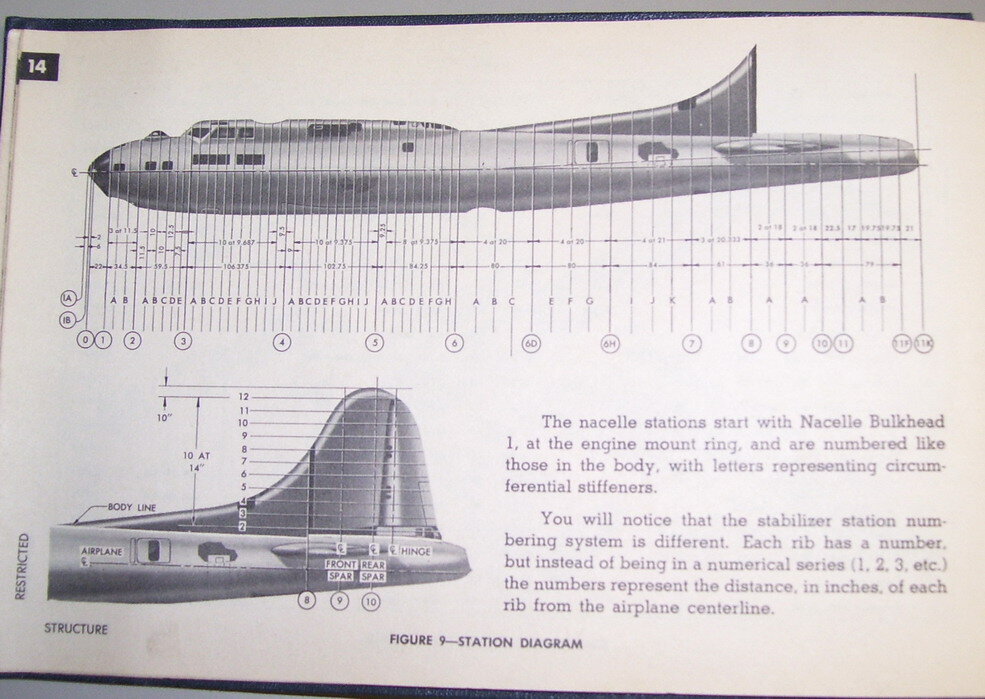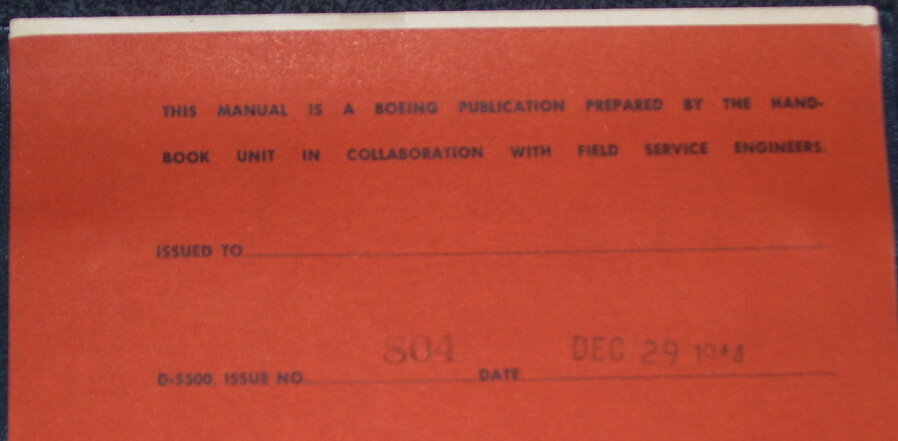B-17 Flying Fortress
To look for a specific aircraft, go to our Searchable Database.
The 95th Bomb Group flew 136 B-17Fs in 1943 and 1944, and 202 B-17Gs with the added chin turret, and later the Cheyenne tail turret, beginning in late 1943 through the end of the war in 1945.
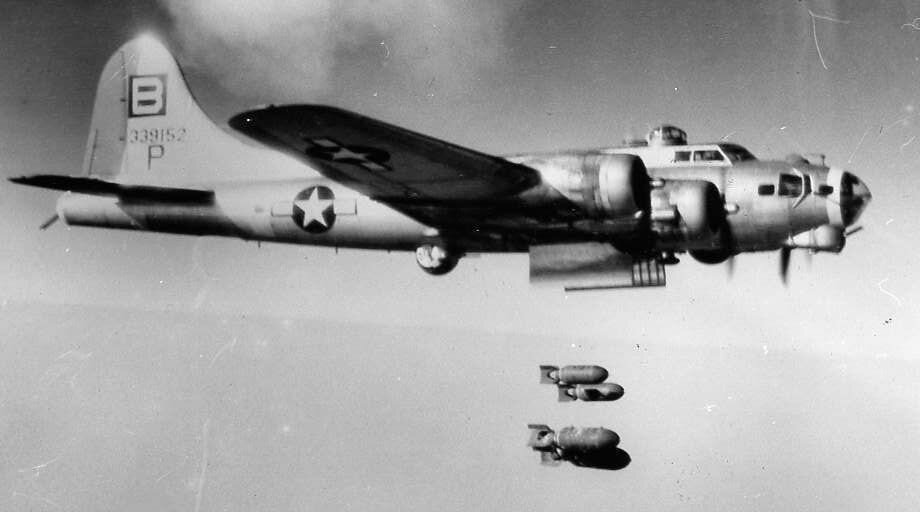
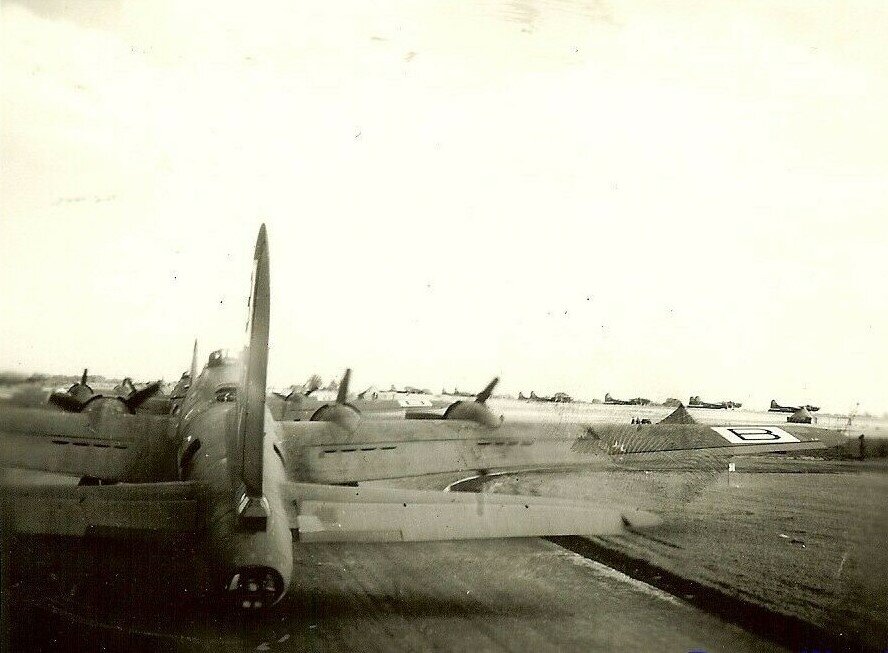
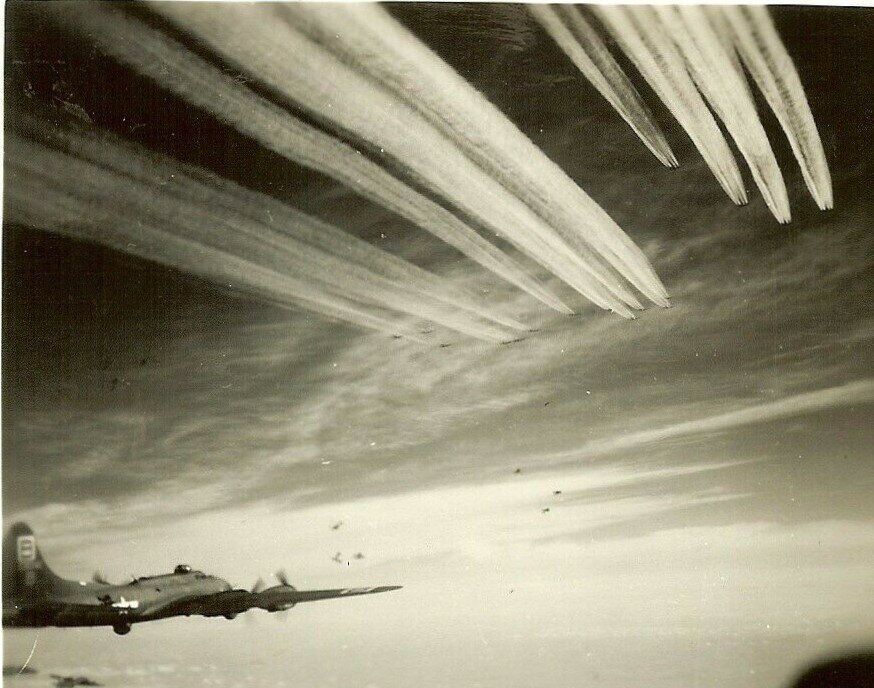
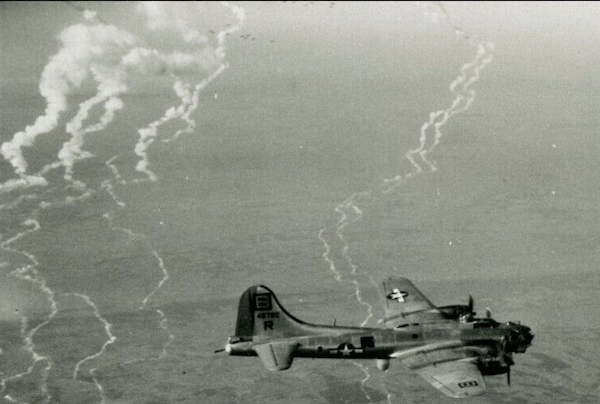


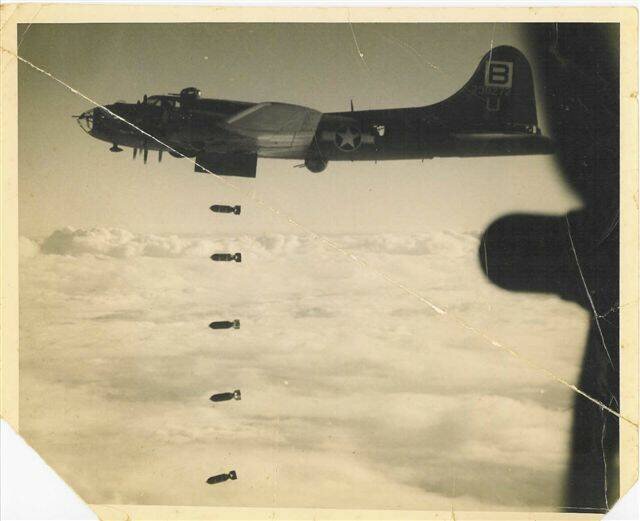
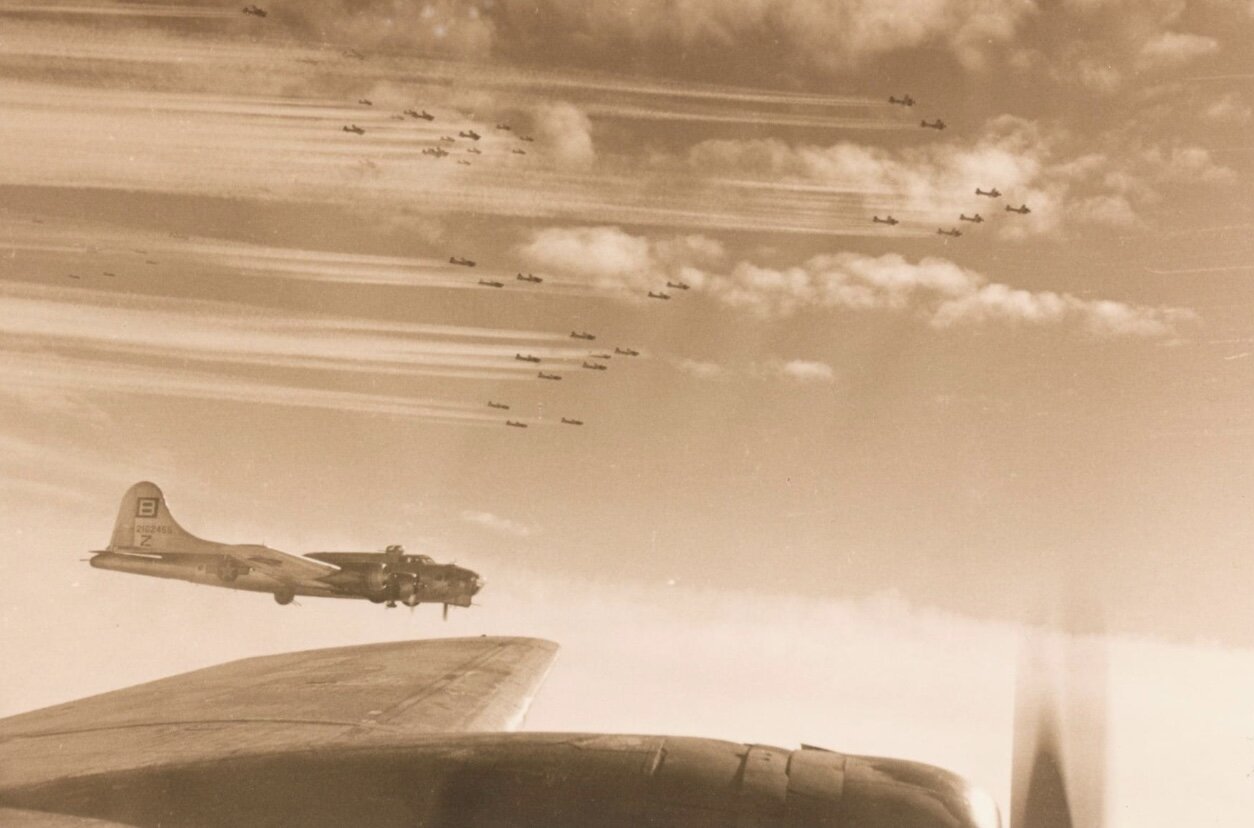
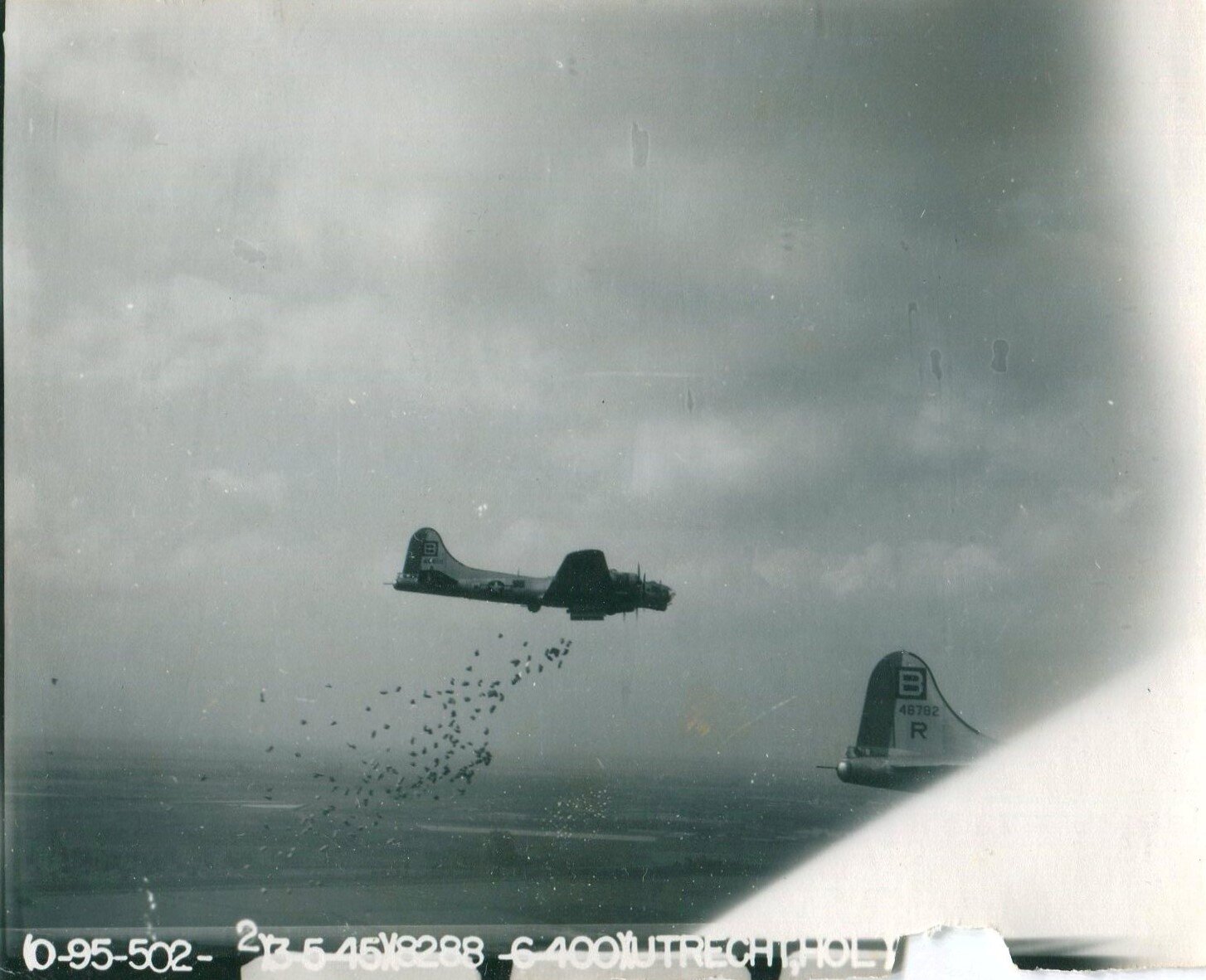
Aircraft Markings
There were a number of symbols, numbers, and letters painted on 95th Bomb Group B-17s to help identify the aircraft within their group and to other Allied aircraft. A chronological review of the development of B-17 markings and camouflage can be found here.
U.S. Aircraft Symbol: A white star within a blue circle with white horizontal tabs identified the aircraft as a U.S. plane. It was painted on the sides of the aircraft, as well as on the top and bottom of the left wing.
Bomb Group Symbol: B-17s of the 95th Bomb Group were painted with a "B" in a square on the tail of the plane and on the wings. This was either a white B on a black square or a black B on a white square, depending upon the plane's color.
Aircraft Number: On the tail of each B-17 aircraft was the aircraft number. This was a unique number that identified each B-17. The first number of the aircraft number usually identified the year that the plane was manufactured, i.e. 1=1941, 2=1942, 3=1943, and 4=1944.
Note: All the B-17s with year 3 serial numbers were Boeing B-17G aircraft built in mid-1944 to April 1945.
Radio Call Letter: Radio call letters were painted on the side and tail of each B-17 so that each plane within a squadron could identify and communicate with other planes during missions. Each plane contained a single alphabetic radio call letter. In some cases, planes were reassigned and given a different radio call letter. For example, aircraft 42-3317 was with the 412th Bomb Squadron and was painted with "Y" and "V" radio call letters at different times.
Squadron Code Letters and Nosebands: As the war progressed into early 1943, B-17s started to display two-letter squadron codes on their fuselage. The practice of highlighting 13th CW ships with colored nose bands began in the summer of 1944 with some variation, but it is generally accepted that February 1945 was the start of uniform painting of the nose band and prop boss.
Squadron Code letters and colors of nosebands of 95th BG Squadrons:
Squadron Code Noseband color
334th BG yellow
335th OE dark blue
336th ET light green
412th QW red
NOTE: The squadron codes were only painted on the planes in the beginning of the war. Later, there wasn't enough time to get all the painting done with the number of planes being lost and replaced. It was also determined that the extra paint reduced air speed and used precious fuel.

